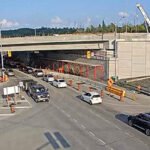Cities and communities across North America are experiencing rapid change. New developments, utility upgrades, road construction, transit improvements, and infrastructure repairs occur year-round, creating more work zones than ever before. While these projects support long-term growth, they also place increased pressure on drivers, pedestrians, cyclists, and roadside workers who must navigate constant detours and shifting traffic patterns.
Traffic control might seem like a routine part of roadwork, but in reality, it is one of the most important safety measures on any active site. When managed properly, it creates order, reduces the risk of collisions, and allows construction to progress efficiently. When handled poorly, it can lead to confusion, road blockages, and preventable accidents. This is why trained traffic management teams have become essential for municipal, residential, commercial, and industrial projects. Companies such as Capital Traffic Management Solutions (CTMS) support these activities by providing certified personnel and effective on-site traffic control strategies.
The rise of work zones
Construction activity has increased significantly in recent years. Residential areas are expanding, large-scale commercial projects are more frequent, and ageing infrastructure requires ongoing maintenance. Water mains, sewer lines, broadband networks, and electrical systems all need upgrades to meet current demands. With this level of activity, work zones have become a common feature on urban and suburban roads.
More work zones mean more interactions between moving vehicles and roadside workers. Drivers today are also more distracted than ever, which increases the likelihood of unsafe situations. Even small mistakes near an active site can cause serious consequences. Traffic control professionals help bridge this gap by guiding vehicles safely, creating proper lane closures, and ensuring that the public can move through or around the work zone without confusion.
Why roadside safety is a growing priority
Roadside workers face a level of exposure that few other industries experience. Crews often stand only steps away from moving vehicles while handling tools, inspecting utilities, or operating equipment. Their focus is on the task at hand, which means they rely heavily on traffic control teams to manage approaching vehicles.
Traffic control personnel do far more than hold stop and slow paddles. They assess driver behaviour, adjust control points as traffic conditions change, communicate with equipment operators, and maintain safe spacing between the work zone and the public. Their presence reduces the risk of collisions and protects both workers and motorists.
Weather challenges and variable driving conditions
Weather conditions add complexity to traffic management. Rain reduces visibility, ice affects stopping distances, heat impacts driver alertness, and fog obscures signage. Seasonal changes also affect how quickly traffic can react to control measures. Worksites must adjust quickly to these variables. Experienced traffic control teams can modify their approach in real time by repositioning cones, adjusting flagger locations, enhancing visibility, and increasing communication with crews.
Effective traffic management under unpredictable weather is one of the greatest contributors to roadside safety. Without these adjustments, minor issues can escalate quickly.
Increased demand from cyclists and pedestrians
More communities are adopting active transportation initiatives. Bike lanes, shared pathways, and pedestrian-friendly routes are becoming standard in new developments. When construction intersects with these areas, it can create hazards for vulnerable road users.
Pedestrians may accidentally enter restricted zones if detours are unclear. Cyclists may be forced into general traffic without adequate warning. Proper traffic management ensures signage is visible, detour paths are logical, and interactions between different modes of transport remain safe.
The impact of work zones on traffic flow
Even a small lane closure can trigger significant congestion if not managed correctly. Traffic bottlenecks lead to delays, increased emissions, and heightened driver frustration. Poorly planned closures can also impede emergency vehicles, delivery routes, and transit schedules.
Traffic control teams help maintain a steady flow by installing appropriate signage, adjusting lane configurations, and coordinating timing with the pace of the work being performed. Their goal is not only to maintain safety but also to reduce delays and support smoother travel throughout the corridor.
Efficiency for construction teams
Traffic management contributes directly to project efficiency. When traffic is controlled properly, crews can focus on their work without constant interruptions or the need to reposition barriers repeatedly. Material deliveries can access the site more easily, and heavy equipment can manoeuvre without conflicting with vehicle flow.
Controlled work zones help projects finish on time, which ultimately reduces costs and minimises the duration of disruptions for the public. For contractors working on large or multi-phase projects, certified traffic control specialists are essential partners in keeping the job on schedule.
Meeting evolving safety standards
Safety regulations have become more stringent as the volume and complexity of construction projects increase. Many jurisdictions now require certified traffic management professionals for any work taking place near active roadways. These standards are designed to protect workers, motorists, and pedestrians by ensuring that work zones meet specific criteria.
Companies like CTMS follow established guidelines, updated standards, and industry best practices. They help contractors meet compliance requirements while maintaining high safety performance on site.
Supporting infrastructure expansion and community development
Modern communities require continuous upgrades to remain functional. Broadband installations, water and sewer replacements, transit expansions, road widening, and electrical improvements all depend on controlled work zones. Without proper traffic management, many of these projects would face delays, increased risks, and escalating costs.
Traffic control ensures that these improvements can take place while allowing residents, commuters, and businesses to continue operating normally. It acts as a necessary connection between construction progress and daily life.
A service that benefits everyone
Traffic management is often overlooked, yet it supports nearly every part of community development. It protects workers who build and repair essential systems. It supports drivers, cyclists, and pedestrians by keeping routes safe and predictable. It allows construction teams to work efficiently. It helps infrastructure upgrades stay on schedule. And it reduces the overall stress associated with navigating roadwork.
As communities continue to grow, the demand for trained traffic management professionals will increase. Work zones will become more frequent, not less, due to ageing infrastructure and rising development needs. Proper traffic control is key to balancing safety, efficiency, and mobility.
Traffic management may be one of the quieter elements of construction, but its importance continues to rise. With trained teams, clear planning, and well-managed work zones, everyone benefits.
Other articles from totimes.ca – otttimes.ca – mtltimes.ca











